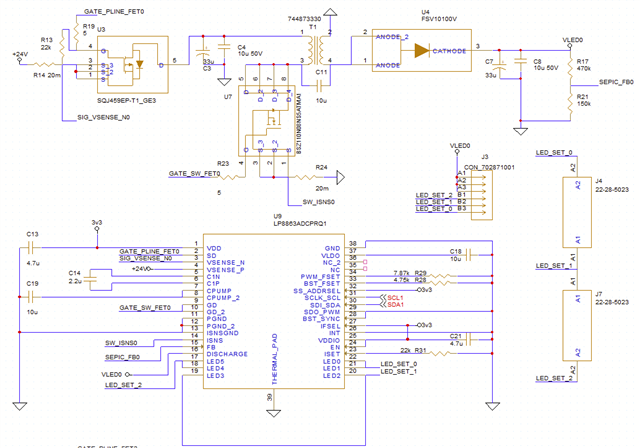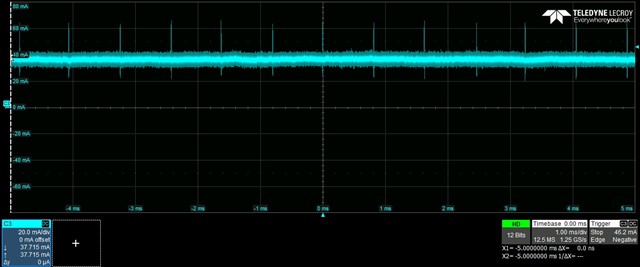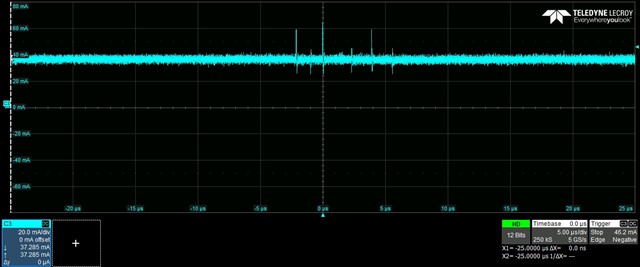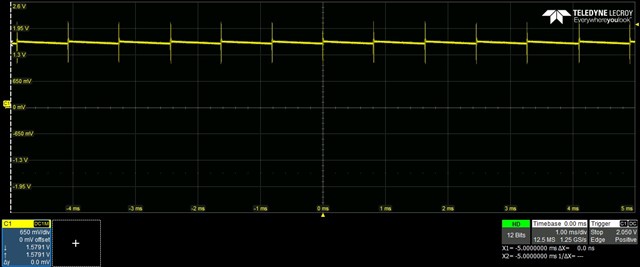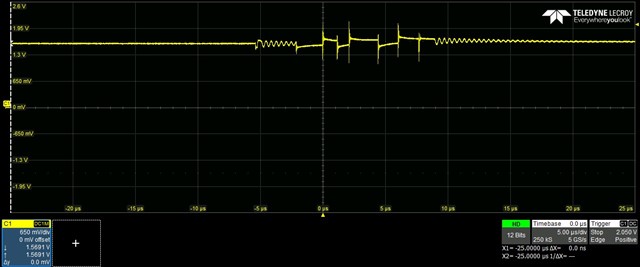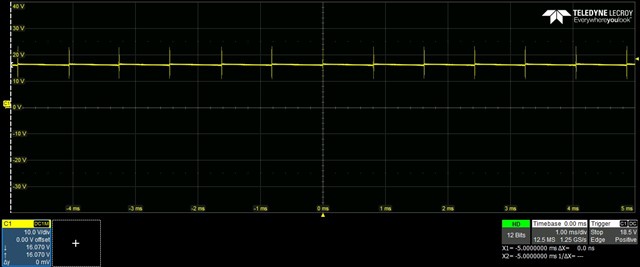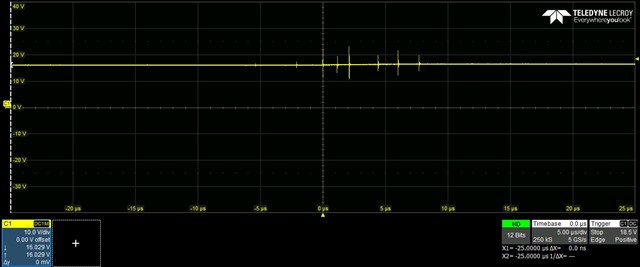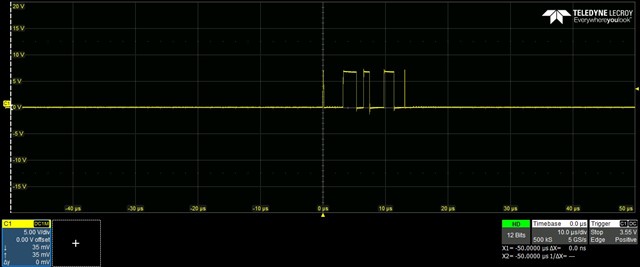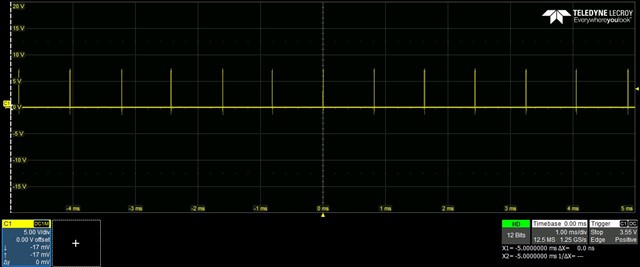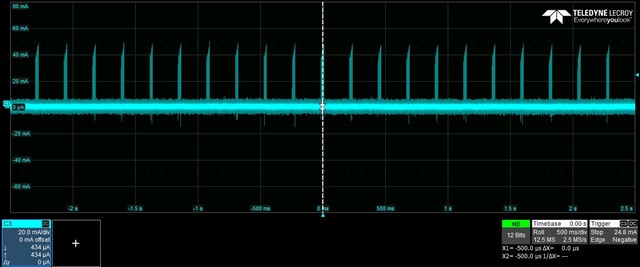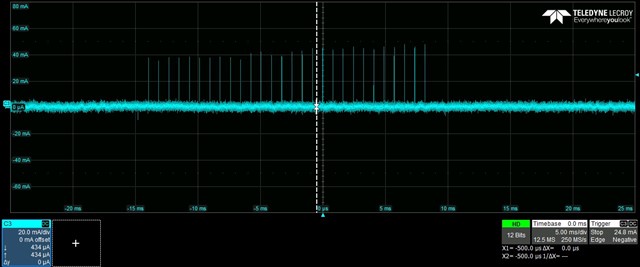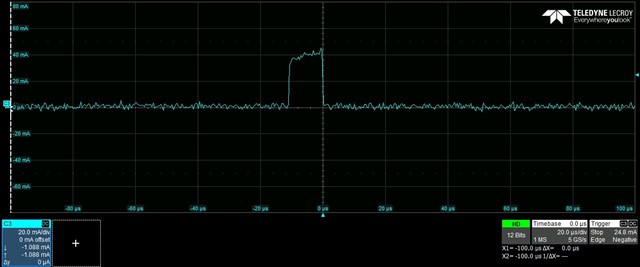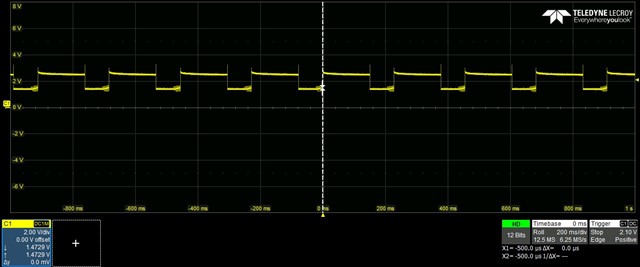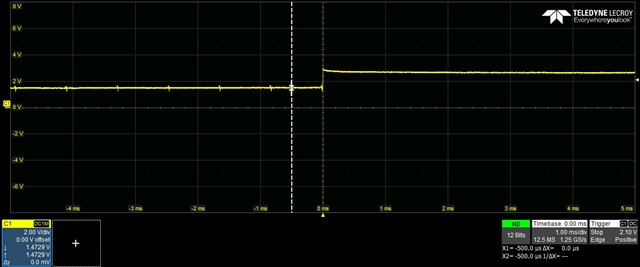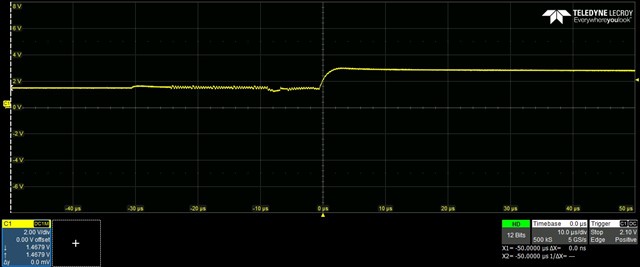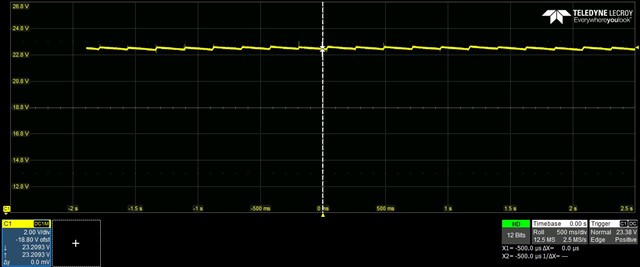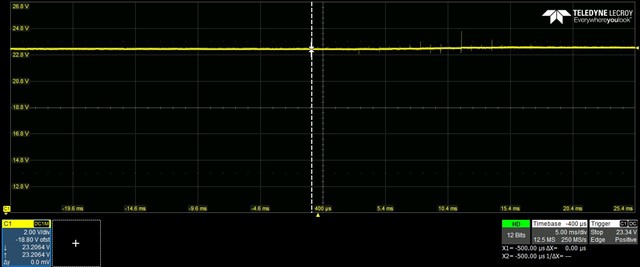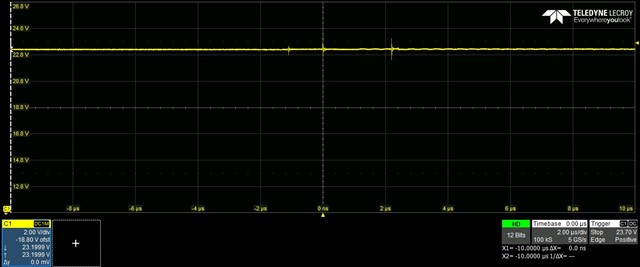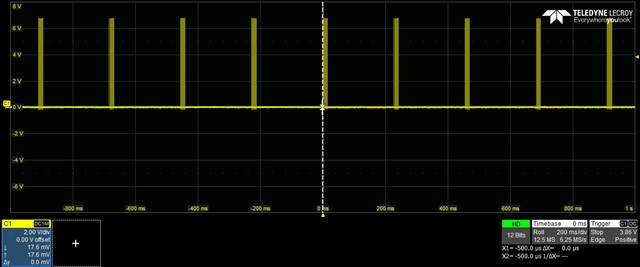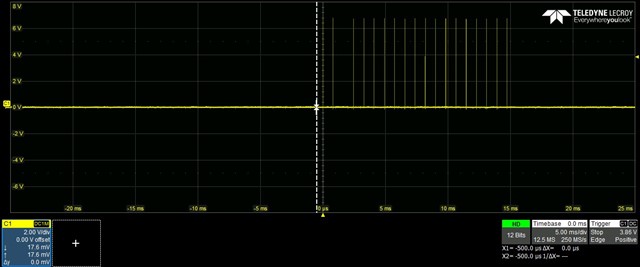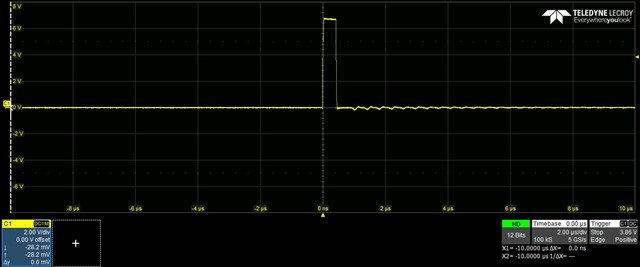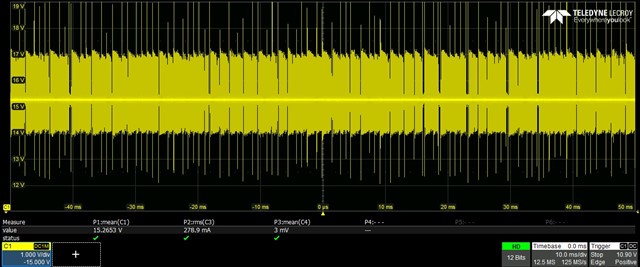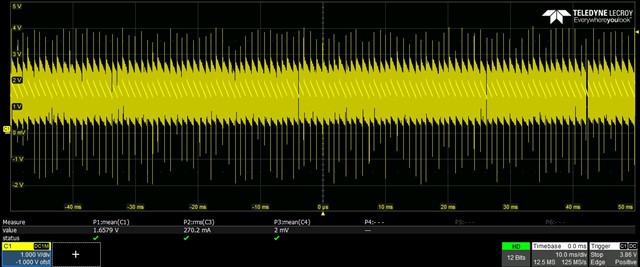Hello!
I am attempting to drive an LED string at near 900mA using the LP8863 in the following setup:
- SEPIC mode with 24V input and 23.2V max output with RFB1=150k and RFB2=470k.
- 400 kHz switching frequency
- 33uH coupled inductor, 10uF coupling capacitor, 33uF polymer + 10uF ceramic capacitors on input and output.
- 141mA current limit per channel (Riset = 22k)
- All 6 channels are connected in parallel.
- Control through I2C
Over I2C, the device is configured with:
- PWM mode at full brightness (0xFFFF written to 0x28)
- Initial current limit for each channel set at 0.72mA (LEDx_CURRENT = 0x0015)
- Each LEDx_CURRENT register is incremented by 1 every 50ms and the value 0x0001 is written to BRT_DB_CONTROL to update
Initially, the LEDs show steady brightness. As current approaches 40mA the voltage ripple on the SEPIC output increases and has a frequency much lower than the switching frequency. At approximately 40mA the LEDs shut off and the voltage on the SEPIC output remains near the maximum voltage determined by RFB1 and RFB2. This occurs at the same LED current when driving with 1, 2, and 3 channels.
Continuously reading the status and diagnostic registers shows the device cycling through startup, and fault states repeatedly. This is accompanied by two interrupt status bits. First CP_STATUS and then BSTOVPL_STA
TUS. Loading the SEPIC output directly with a 180 ohm resistor produces stable voltage, and does not affect the LED current where these conditions occur, so it seems the SEPIC is capable of providing enough current.
Could anyone advise on where the problems may be?


